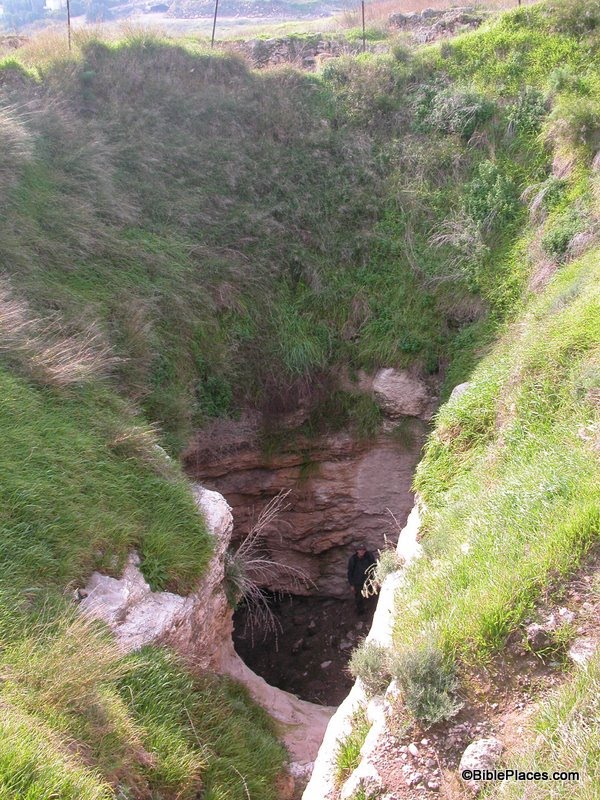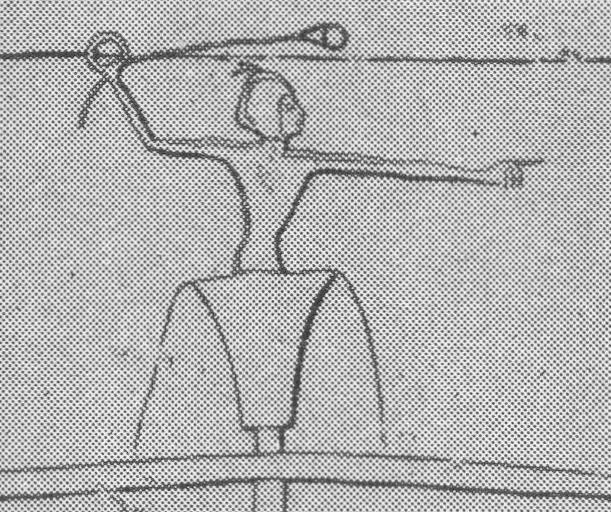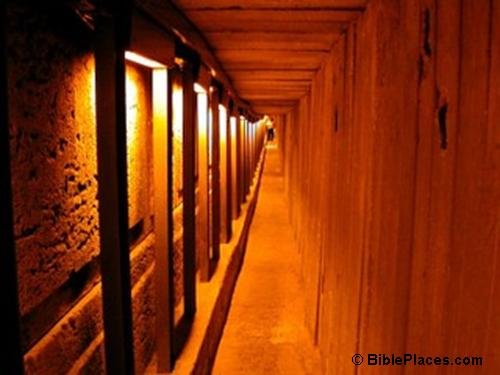The Baptist Press recently posted an article about the Middle Bronze II water tunnel at Tel Gezer. The excavation team is currently clearing out the tunnel and conducting a detailed study of it. Below is a picture of the entrance to the tunnel taken in 2004 by Todd Bolen. The tunnel begins to the left of where the man is standing and descends underground past the left side of the picture. (Recent pictures from inside the tunnel are posted with The Baptist Press article.)
Here’s how the article describes the tunnel:
The challenge is excavating a large, rock-hewn water tunnel at Tel Gezer that is believed to have been carved out by Canaanites between 1800 and 1500 B.C. — around the time of Abraham. Tons of debris must be removed from the ancient tunnel before the real work can even begin. …
The Gezer system also is unusually large, measuring 12 feet wide by 24 feet tall, Parker noted. It is believed that the ancient people used donkeys to ferry water from the source to the surface. The width allowed two animals, loaded with jugs, to pass side by side. The height of the tunnel perplexes the expedition team, and they hope to find an explanation as they pursue the dig. …
Last summer the team began the arduous tasks of removing tons of rubble from the tunnel. During a three-week dig, they cleared 72 tons of dirt and rocks. Team members dug out the tunnel and put debris in large sacks which were hoisted out with a crane. Due to the 38-degree slope, Parker compared it to working on a steeply pitched roof.
The Middle Bronze II period was a time when the Canaanite city-states grew strong. Large public works were widespread in the region, such as city walls, massive earthen ramparts, and glacis (i.e., defensive slopes below the city walls). So the cooperation and organization needed to dig a water tunnel was relatively common during that period, but (as the article points out) elaborate water systems were not. Sophisticated water systems (such as the ones at Hazor, Megiddo, and Hezekiah’s Tunnel in Jerusalem) are more characteristic of Iron Age II cities.
Side Note: The article mentions that 1800 to 1500 B.C. is “around the time of Abraham.” The date of Abraham’s lifetime is a debated issue related to the “Early Date vs. Late Date” controversy about the Exodus. The article apparently assumes a Late Date position. My personal conviction (and that of Todd Bolen) is that the Early Date position is the correct one, which would place Abraham’s lifetime at approximately 2150 to 2000 B.C. If this is correct, then construction of the Gezer water tunnel would have occurred during the time of Israel’s 430-year sojourn in Egypt.
The Baptist Press article can be found here. Details about the dig this summer can be found here. The excavation’s homepage can be found here.
HT: Joseph I. Lauer


